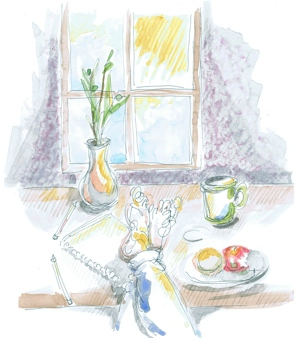 I heard Coleman Barks read this poem of his in a small group years ago, and it has continued to stir my heart. When we think of other-centered love, it is inextricably tied to the wonder of the human being, and our complex relationships with each other.
I heard Coleman Barks read this poem of his in a small group years ago, and it has continued to stir my heart. When we think of other-centered love, it is inextricably tied to the wonder of the human being, and our complex relationships with each other.
Higdon Cove
Give it the next fellow.
Not the ten dollars, the help. No mistaking
What he meant or saw the afternoon as,
A fine chance. The 1965 tractor started up,
Though one of its brakes kept sticking, amusing him.
I’d gotten as far as I could, trying to find a new walk,
To the gate bar across the road and backed back and onto
Soft shoulder, slid helplessly into the ditch, hopeless
To maneuver out of. Walked to the nearest house.
He came to the door still chewing his lunch,
Then towards the barn, making a polite apology.
You’re heading for that tractor, aren’t you?
If it won’t start, we’ll get a horse.
The man who wants no credit, or even to shake hands,
Too busy with what needs doing, holds his arms
Close in and sidles by me in the barn
Like I’m a ticklish passage, me holding out my money.
Give it to the next fellow.
There is a huge holly tree next to where I glided to a stop,
A solid thigh-trunk white-splotched
And stretching deep under the ditchwater.
Beauty, but not such as this man is,
beyond any tree.
Coleman Barks, Winter Sky: New and Selected Poems, 1968-2008
2008 University of Georgia Press


 I heard Coleman Barks read this poem of his in a small group years ago, and it has continued to stir my heart. When we think of other-centered love, it is inextricably tied to the wonder of the human being, and our complex relationships with each other.
I heard Coleman Barks read this poem of his in a small group years ago, and it has continued to stir my heart. When we think of other-centered love, it is inextricably tied to the wonder of the human being, and our complex relationships with each other. What art fuels your ability to love? Fans the flames of love in you? In a recent lecture at the
What art fuels your ability to love? Fans the flames of love in you? In a recent lecture at the  Here are some
Here are some  Recently I have developed a passion for mending. I was invigorated by reading the books Mend! by Kate Sekules, and
Recently I have developed a passion for mending. I was invigorated by reading the books Mend! by Kate Sekules, and  One of the reasons I go to our local farmers market is to get lost in the visual beauty of the fruits and vegetables and flowers. I take in all the smells too. It is a high spot of summer for me. I bought these beets even though they looked rather unattractive. When I got home, I decided to sketch them. At first, they just looked brown and muddy, but as I drew them, I detected subtleties. I thought about how things in our lives that do not look great on the outside, can reveal beauty and goodness nevertheless. And I haven’t even cooked them yet.
One of the reasons I go to our local farmers market is to get lost in the visual beauty of the fruits and vegetables and flowers. I take in all the smells too. It is a high spot of summer for me. I bought these beets even though they looked rather unattractive. When I got home, I decided to sketch them. At first, they just looked brown and muddy, but as I drew them, I detected subtleties. I thought about how things in our lives that do not look great on the outside, can reveal beauty and goodness nevertheless. And I haven’t even cooked them yet. This iris was nestled between the weeds outside my front door. After painting this, I realized that each iris I see looks different. The irises have not changed, but I am seeing each of them in new ways. Previously when I looked at it I would have thought, ‘Oh yes, another iris,’ and put it into a file of cartoon-like irises in my mind – maybe some color variations, but basically all the same. But each iris has a particular quality, exists in a particular space, and is seen by me in a moment that for me is different from all those before and after. Each human being needs to be viewed like that too. We put each other into boxes and categories so easily, yet each one of us is so distinct, and each encounter is so different.
This iris was nestled between the weeds outside my front door. After painting this, I realized that each iris I see looks different. The irises have not changed, but I am seeing each of them in new ways. Previously when I looked at it I would have thought, ‘Oh yes, another iris,’ and put it into a file of cartoon-like irises in my mind – maybe some color variations, but basically all the same. But each iris has a particular quality, exists in a particular space, and is seen by me in a moment that for me is different from all those before and after. Each human being needs to be viewed like that too. We put each other into boxes and categories so easily, yet each one of us is so distinct, and each encounter is so different. A chapter in a book I am working on explores how we are not machines, yet can be duped into thinking that we are. It is part of a book that centers on how a person can flourish in difficult circumstances. As I was writing it, the Generative AI, Chat GPT, and computer future fears surfaced in the media, and we have been alerted to an acceleration of human-seeming abilities of technology. I found myself concerned with issues that are arising now, rather than long term fears, and wrote a paper for the US Office of Science and Technology Policy with recommendations for action. There are many people who can speak to so many issues raised by AI, but I thought there were some things that were being left out of discussions, and my scholarship in human relationships might be helpful in making recommendations for action and making a case for those.
A chapter in a book I am working on explores how we are not machines, yet can be duped into thinking that we are. It is part of a book that centers on how a person can flourish in difficult circumstances. As I was writing it, the Generative AI, Chat GPT, and computer future fears surfaced in the media, and we have been alerted to an acceleration of human-seeming abilities of technology. I found myself concerned with issues that are arising now, rather than long term fears, and wrote a paper for the US Office of Science and Technology Policy with recommendations for action. There are many people who can speak to so many issues raised by AI, but I thought there were some things that were being left out of discussions, and my scholarship in human relationships might be helpful in making recommendations for action and making a case for those.


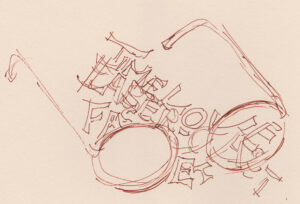 Have you ever written poetry? Not to produce a poem as professional poets do or with the aim of creating something to be admired, but just for the fun of playing with words, being friendly with them? Sestinas are a poetic form, where 6 words are used over and over again in 7 stanzas, no rhyming. (A good example is Elizabeth Bishop’s poem entitled
Have you ever written poetry? Not to produce a poem as professional poets do or with the aim of creating something to be admired, but just for the fun of playing with words, being friendly with them? Sestinas are a poetic form, where 6 words are used over and over again in 7 stanzas, no rhyming. (A good example is Elizabeth Bishop’s poem entitled  When we have experienced emotional or physical or relationship damage in the past, it can continue to feel frustrating at best and irreparably harmful at worst. I so often look at the broken places as problems, limitations, and inadequacies. Or I try to ignore them. But the kintsugi approach actually highlights the beauty in repairs.
When we have experienced emotional or physical or relationship damage in the past, it can continue to feel frustrating at best and irreparably harmful at worst. I so often look at the broken places as problems, limitations, and inadequacies. Or I try to ignore them. But the kintsugi approach actually highlights the beauty in repairs.

 The poet WH Auden said that the artist feels the impulse to create a work of art when the passive awe provoked is transformed into a desire to express that awe in a rite of worship. To be fit homage, he said, this rite must be beautiful. We do not always achieve our goal to create something beautiful, but our desire to do so is good in itself.
The poet WH Auden said that the artist feels the impulse to create a work of art when the passive awe provoked is transformed into a desire to express that awe in a rite of worship. To be fit homage, he said, this rite must be beautiful. We do not always achieve our goal to create something beautiful, but our desire to do so is good in itself.
 Grace is one of the most majestic words in theology. It suggests the sublime spontaneity of the divine which no theory or category could ever capture. Grace has its own elegance. It is above the mechanics of agenda or operation. No-one can set limits to the flow of grace. Its presence and force remain unmeasurable and unpredictable. Grace also suggests how fluent and seamless the divine presence is. There are not compartments, corners or breakages imaginable in the flow of grace. Grace is the permanent climate of divine kindness. It suggests a compassion and understanding for all the ambivalent and contradictory dimensions of the human experience and pain. This climate of kindness nurtures the sore landscape of the human heart and urges torn ground to heal and become fecund. Grace is the perennial infusion of springtime into the winter of bleakness. – (John O Donahue, Beauty, 2004, Harper Collins pg 228)
Grace is one of the most majestic words in theology. It suggests the sublime spontaneity of the divine which no theory or category could ever capture. Grace has its own elegance. It is above the mechanics of agenda or operation. No-one can set limits to the flow of grace. Its presence and force remain unmeasurable and unpredictable. Grace also suggests how fluent and seamless the divine presence is. There are not compartments, corners or breakages imaginable in the flow of grace. Grace is the permanent climate of divine kindness. It suggests a compassion and understanding for all the ambivalent and contradictory dimensions of the human experience and pain. This climate of kindness nurtures the sore landscape of the human heart and urges torn ground to heal and become fecund. Grace is the perennial infusion of springtime into the winter of bleakness. – (John O Donahue, Beauty, 2004, Harper Collins pg 228)
 I ‘listen’ to poetry to hear what speaks to me. Each of us hears a poem in a different way. I have been finding nourishment in these lines from the poem “Somewhere” (from Laboratories of the Spirit, Macmillan 1975) by the Welsh poet R.S.Thomas.
I ‘listen’ to poetry to hear what speaks to me. Each of us hears a poem in a different way. I have been finding nourishment in these lines from the poem “Somewhere” (from Laboratories of the Spirit, Macmillan 1975) by the Welsh poet R.S.Thomas.

 Is being vulnerable something we should avoid at all costs? There is a welcoming quality in vulnerability. Who wants to be hugged by, or hug, a suit of armor? This quilt on my sofa invites someone to sit on it. Not like metal, square edges, hard corners, which might represent a ‘cool’ place. Softness represents invitation and warmth. Soft, vulnerable people can easily get injured, but also create a safe space, a welcoming space, for someone to relax and rest, and be who they are.
Is being vulnerable something we should avoid at all costs? There is a welcoming quality in vulnerability. Who wants to be hugged by, or hug, a suit of armor? This quilt on my sofa invites someone to sit on it. Not like metal, square edges, hard corners, which might represent a ‘cool’ place. Softness represents invitation and warmth. Soft, vulnerable people can easily get injured, but also create a safe space, a welcoming space, for someone to relax and rest, and be who they are. We hear people say to ‘Get over it!’ But is that such good advice? This poem expresses a response to that better than I can.
We hear people say to ‘Get over it!’ But is that such good advice? This poem expresses a response to that better than I can. One of the things that holds me back from creating things is the fear of making mistakes. When doing this drawing, my reddish pen ran out of ink, and then the yellowish ink i changed to ran unexpectedly. But in the end, something unfolded that I could not have imagined from the start. Life can be like that too. Things we think are bad mistakes can lead to unexpected and good outcomes.
One of the things that holds me back from creating things is the fear of making mistakes. When doing this drawing, my reddish pen ran out of ink, and then the yellowish ink i changed to ran unexpectedly. But in the end, something unfolded that I could not have imagined from the start. Life can be like that too. Things we think are bad mistakes can lead to unexpected and good outcomes.
 I do not like conflict. But we just cannot avoid some of it in life. Others can be aggressive, we can feel outraged, or we can just have strong disagreements. The words in this drawing of mine are from a set of translations/interpretations from The Way of Chuang Tzu by Thomas Merton.
I do not like conflict. But we just cannot avoid some of it in life. Others can be aggressive, we can feel outraged, or we can just have strong disagreements. The words in this drawing of mine are from a set of translations/interpretations from The Way of Chuang Tzu by Thomas Merton.

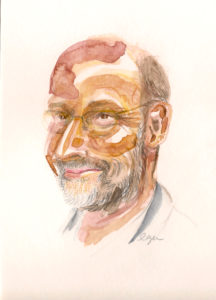 ‘The History of Philosophy without any Gaps.” is a podcast I have listened to for years and love. I have learned so much. Many of the episodes, on topics of particular interest to me, I listen to 2 or 3 times. If I find this fun, what does this say about me? The presenter, Peter Adamson, has a sense of humor, and is open-minded, and has such a knowledge base, and provides a depth of content that he expresses so well. I listen on iTunes, but here is a link to his website:
‘The History of Philosophy without any Gaps.” is a podcast I have listened to for years and love. I have learned so much. Many of the episodes, on topics of particular interest to me, I listen to 2 or 3 times. If I find this fun, what does this say about me? The presenter, Peter Adamson, has a sense of humor, and is open-minded, and has such a knowledge base, and provides a depth of content that he expresses so well. I listen on iTunes, but here is a link to his website: 





 I have always loved to dance, and to watch others dancing. There is something about dancing that can express joy in fantastic ways, connecting our feelings of joy to how we feel in our bodies. I have enjoyed a video recently, of the TU Dance Company in a collaboration with the singer Bon Iver, and I enjoyed sketching the dancers, entering into their experience while doing so (
I have always loved to dance, and to watch others dancing. There is something about dancing that can express joy in fantastic ways, connecting our feelings of joy to how we feel in our bodies. I have enjoyed a video recently, of the TU Dance Company in a collaboration with the singer Bon Iver, and I enjoyed sketching the dancers, entering into their experience while doing so (
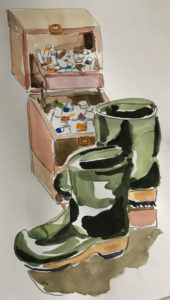
 In so much of life I see words obscuring truth. Here is something that reminds me that words don’t necessarily hide the truth, but can liberate it.
In so much of life I see words obscuring truth. Here is something that reminds me that words don’t necessarily hide the truth, but can liberate it. Flowers grow out of dark moments.
Therefore, each moment is vital. It affects
the whole. Life is a succession of moments and to live each, is to succeed.
Flowers grow out of dark moments.
Therefore, each moment is vital. It affects
the whole. Life is a succession of moments and to live each, is to succeed.

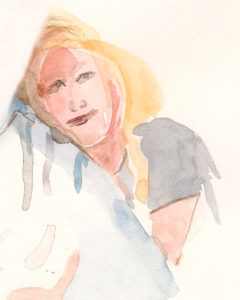
 As I reflected on the days here in the northern hemisphere getting darker and darker, this quote from Merton seemed just right. This is from my advent calendar (click
As I reflected on the days here in the northern hemisphere getting darker and darker, this quote from Merton seemed just right. This is from my advent calendar (click 




 …Humbly,
…Humbly,



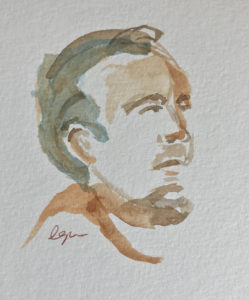


 “People who place their small time into the heart of eternity, which they already carry within, will suddenly realize that even small things, have inexpressible depths, are messengers of eternity, are always more than they appear to be, are like drops of water in which is reflected the entire sky, like signs pointing beyond themselves, like messengers running ahead of the message they are carrying and announcing the coming of eternity, like shadows of true reality that are cast over us because the real is already very near.”—Karl Rahner (trans. Annemarie Kidder)
“People who place their small time into the heart of eternity, which they already carry within, will suddenly realize that even small things, have inexpressible depths, are messengers of eternity, are always more than they appear to be, are like drops of water in which is reflected the entire sky, like signs pointing beyond themselves, like messengers running ahead of the message they are carrying and announcing the coming of eternity, like shadows of true reality that are cast over us because the real is already very near.”—Karl Rahner (trans. Annemarie Kidder)

 I have been part of a group of scholars these past few months, discussing suffering from the perspectives of literature, philosophy, theology and psychology. During our weekly conversations I have found that drawing people in the group, as always, helps me to focus. Although ideas are so often the center of academic discussions, it is the human beings that speak to me. Each person has a depth of being, a fullness of life, that I want to capture somehow. Doing this brings me to appreciate them more.
I have been part of a group of scholars these past few months, discussing suffering from the perspectives of literature, philosophy, theology and psychology. During our weekly conversations I have found that drawing people in the group, as always, helps me to focus. Although ideas are so often the center of academic discussions, it is the human beings that speak to me. Each person has a depth of being, a fullness of life, that I want to capture somehow. Doing this brings me to appreciate them more.

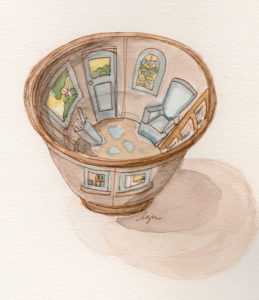

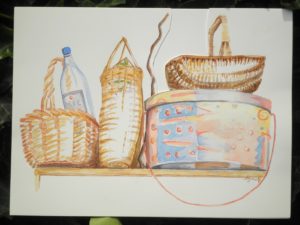
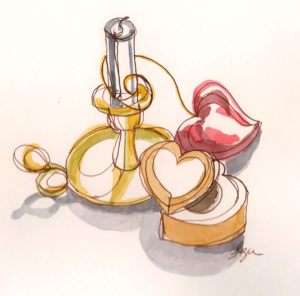
 My continuing passion is to part a curtain, that invisible veil of indifference that falls between us and that blinds us to each other’s presence, each other’s wonder, each other’s human plight.
My continuing passion is to part a curtain, that invisible veil of indifference that falls between us and that blinds us to each other’s presence, each other’s wonder, each other’s human plight.







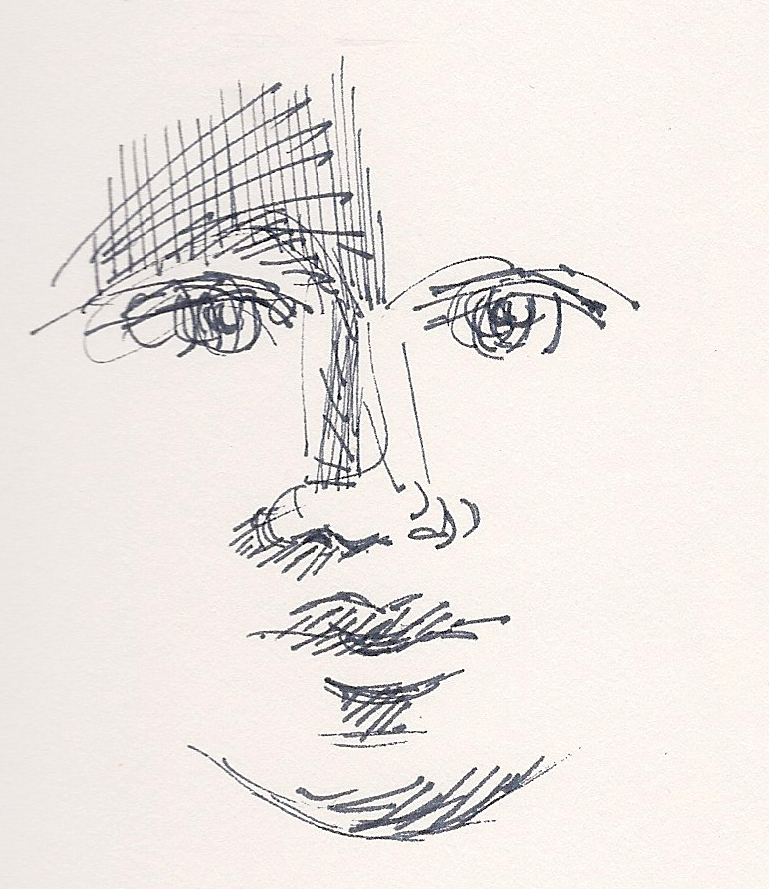 There is always
There is always

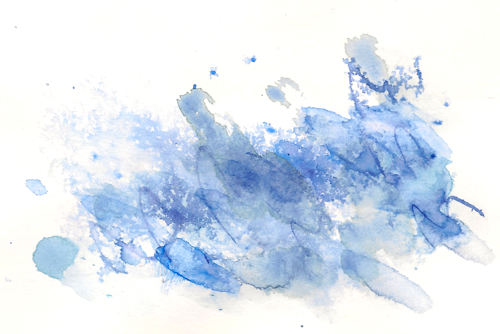


 weeds are just plants that are growing in the wrong place. I recently drew some plants of indeterminate nature outside our front door. A final burst of flowers before autumn hits. I often have trouble telling weeds from flowers. It is the same in my life too – sometimes those things I am sure are weeds, end up with beautiful blooms.
weeds are just plants that are growing in the wrong place. I recently drew some plants of indeterminate nature outside our front door. A final burst of flowers before autumn hits. I often have trouble telling weeds from flowers. It is the same in my life too – sometimes those things I am sure are weeds, end up with beautiful blooms.



 As I feel the first nip in the air, summer is coming to a close, but there are still memories of many things that made this summer wonderful – including the farmers’ markets and the Lake Michigan beach. And opportunities to draw them, from life and from memory and imagination.
As I feel the first nip in the air, summer is coming to a close, but there are still memories of many things that made this summer wonderful – including the farmers’ markets and the Lake Michigan beach. And opportunities to draw them, from life and from memory and imagination.
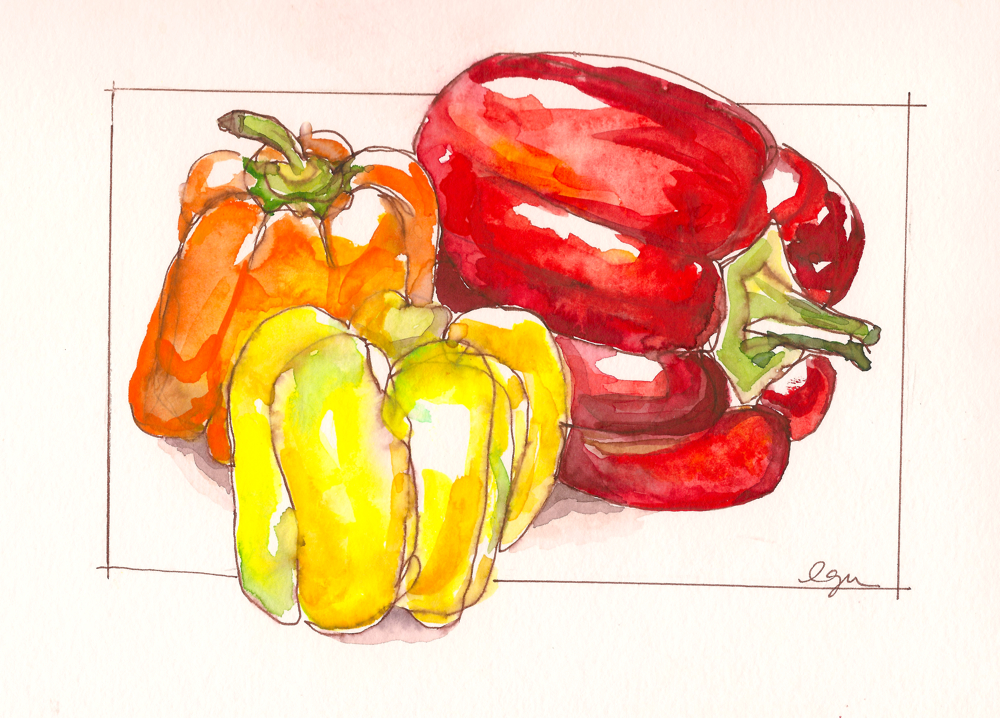



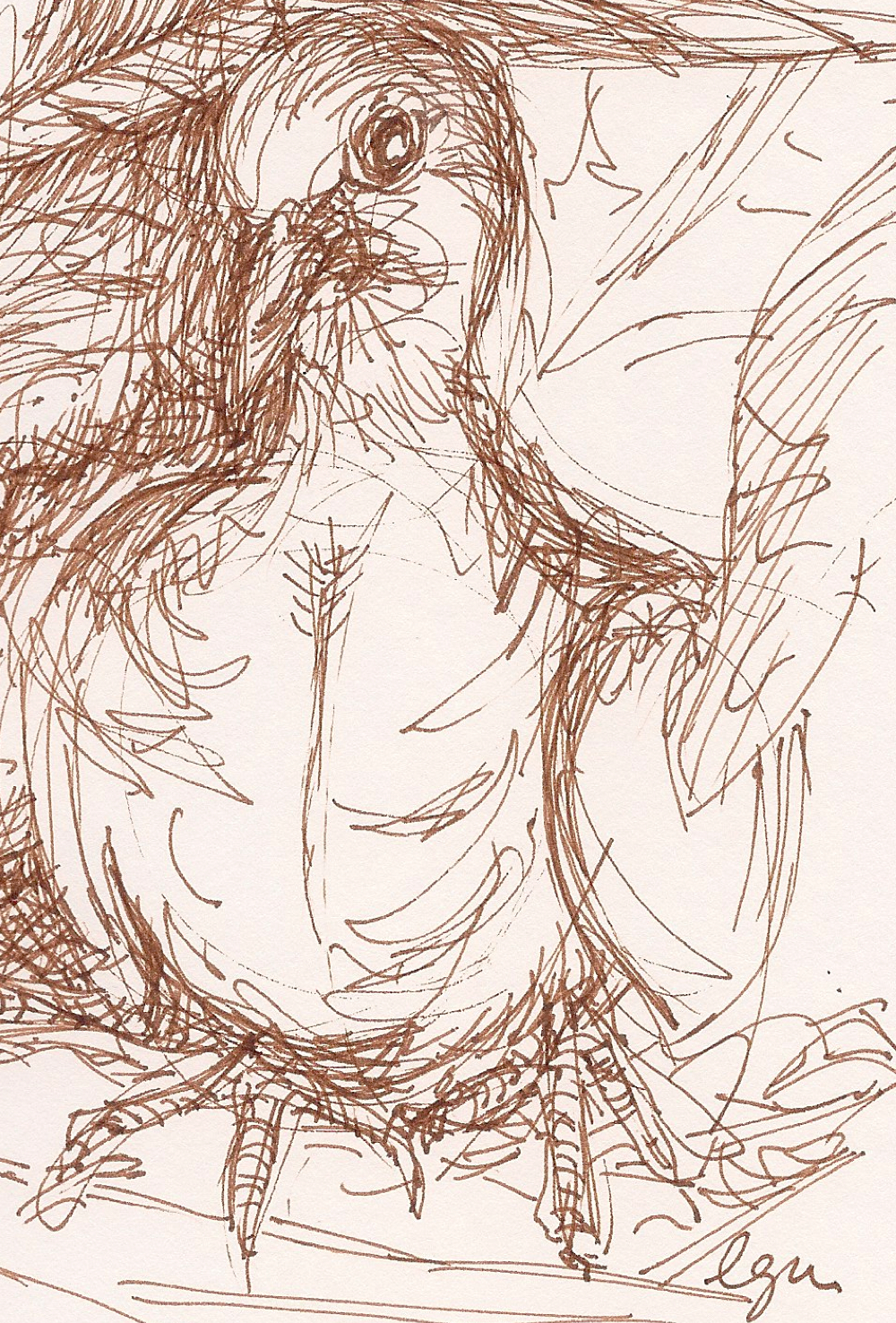


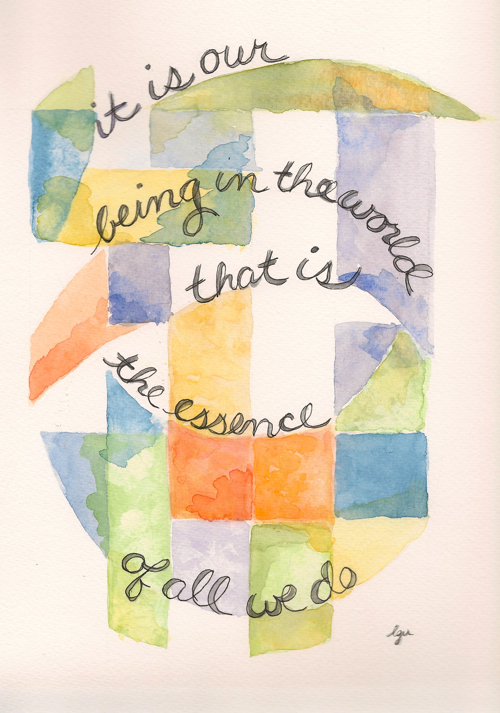

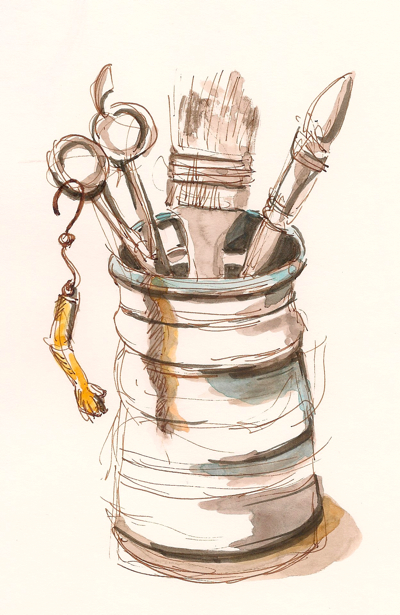
 I have spent a lot of time in various meetings over the last couple of months. When I am not speaking, there is lots of time for listening. I find that by drawing people, it helps me to focus, and also to ‘get’ people in a more
I have spent a lot of time in various meetings over the last couple of months. When I am not speaking, there is lots of time for listening. I find that by drawing people, it helps me to focus, and also to ‘get’ people in a more  complex way, to hear them beyond their words or silences. Here are a few sketches of lovely people from a recent meeting.
complex way, to hear them beyond their words or silences. Here are a few sketches of lovely people from a recent meeting.




